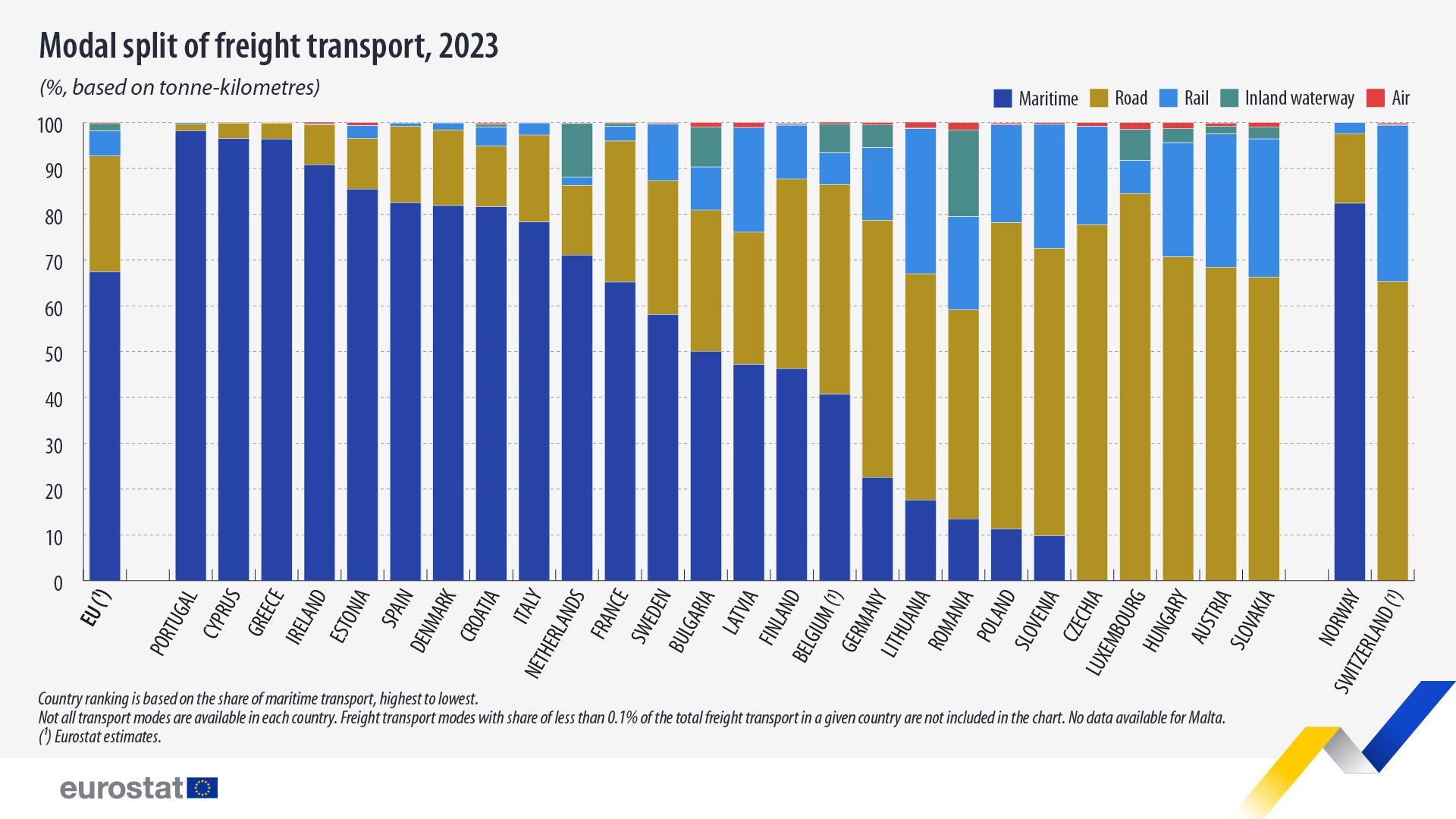Sea transport remains dominant mode of freight in the EU in 2023
In 2023, maritime transport continued to account for the largest share of freight moved within the European Union, representing 67.4% of total tonne-kilometres. This measure reflects both the volume of goods and the distance travelled. Road transport followed with 25.3%, while rail accounted for 5.5%. Inland waterways made up 1.6%, and air freight had a minimal share of 0.2%.
Over the past decade, road transport was the only mode to increase its share, rising by 2.8 percentage points compared to 2013. Maritime transport saw a decline of 2 percentage points, while inland waterways and rail transport also dropped slightly, by 0.6 and 0.2 percentage points respectively.
The data, published by Eurostat, highlights the ongoing significance of sea freight across many EU countries, particularly those with coastlines. In 15 of the 22 EU coastal member states, maritime transport was the dominant method for moving goods. Portugal (98.2%), Cyprus (96.5%), and Greece (96.4%) recorded the highest reliance on sea freight.
In contrast, landlocked countries or those with more developed road networks leaned more heavily on road transport. Luxembourg (84.5%), Czechia (77.7%), and Hungary (70.7%) had the highest shares of road freight.
Several countries maintained strong rail freight sectors. Lithuania led with 31.7% of goods moved by rail, followed by Slovakia (30.1%), Austria (29.1%), and Slovenia (27.1%).
Inland waterways played a notable role in a few countries. Romania transported 18.9% of its freight by this method, the highest among EU countries, followed by the Netherlands at 11.7% and Bulgaria at 8.7%.
Air transport remained marginal, making up more than 1% of freight in only a few countries. Romania (1.6%), Luxembourg (1.5%), Hungary, and Lithuania (1.3% each) had the highest shares.
The statistics are based on the tonne-kilometre method and reflect only freight movements within each country’s territory, following the territoriality principle. For maritime transport, calculations are based on movements within national Exclusive Economic Zones. EU-wide figures for 2023 are estimates.
Source: Eurostat










